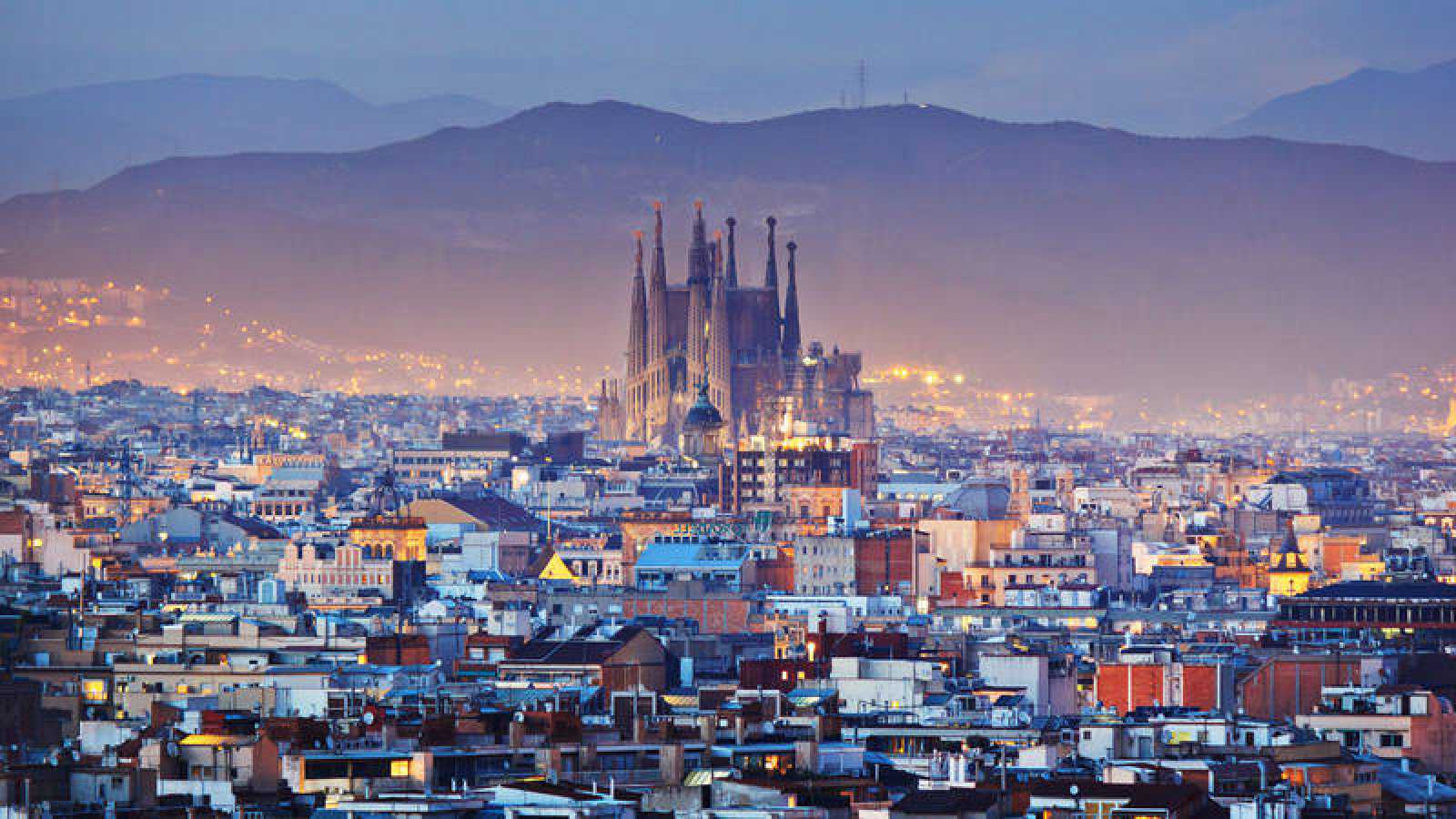
Here is a selection of essential places in the city put together by official local guides from our community. This way you will already know what to see and do in Barcelona when you get there.
Barcelona is a city that can be tough to see in just a weekend, although if you only have two days, you can catch the most iconic places that represent the essence of Catalonia’s culture. The city is one of the most visited destinations in Spain and Europe by travelers from around the world
When choosing these points of interest, you should get some advice from local experts who really know the hidden charms and can see the world though in the eyes of the tourist. In fact, it’s ideal to visit the city of Barcelona with someone who knows it perfectly, both for the inside information you can get but also because of the time you can save by getting oriented quickly and effectively on a guruwalk.
Content
The best way to visit and see Barcelona: do a free walking tour
At GuruWalk, we have a large community of local tour guides that offer the best free walking tours in Barcelona and in many other cities around the world. Thanks to them we can discover the city in a different, fun and more relaxing way.
If you have never done a free walking tour, let us explain what it is and how it works!
Have you ever done a free walking tour? Visit the city in a different way with an official local guide.
GURUWALK
How can I visit Barcelona in 1 or 3 days?
Are you looking for the essential places to visit in Barcelona? This city, which is described as Mediterranean and cosmopolitan, integrates urban remains, medieval neighborhoods, and modernist avant-garde architecture from the 20th Century.
Barcelona is a UNESCO World Heritage Site with emblematic buildings and an incredible cultural, historical and artistic heritage. It is the perfect city to visit since it has multiple museums, shows, dances, historic buildings and parks with lots of colors as well as being famous for its exquisite cuisine.
1. Sagrada Familia
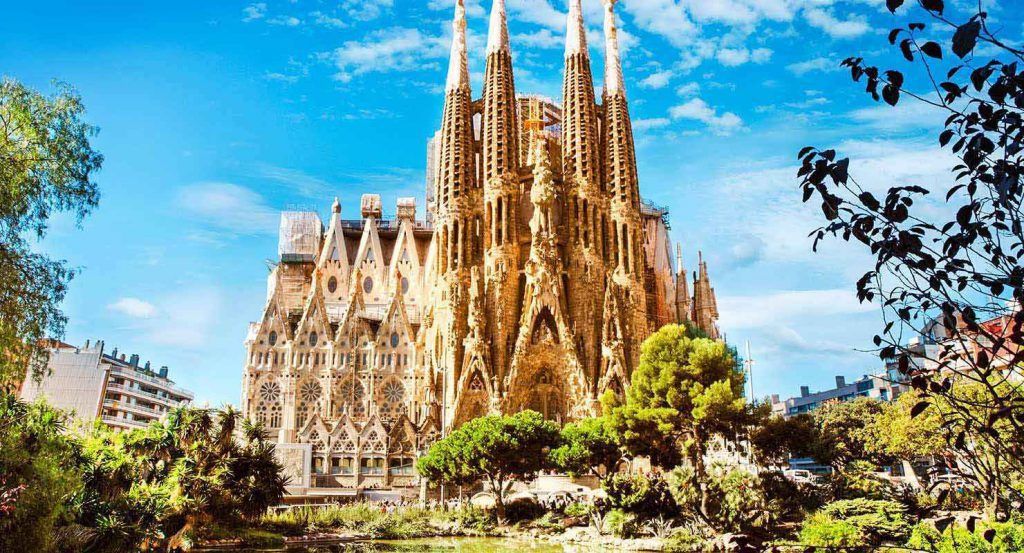
Sagrada Familia, Barcelona
The Sagrada Familia is the symbol par excellence as it is the best known and most characteristic building in the entire Catalonian city. It is modernist architecture designed by the Spanish architect Antoni Gaudí i Cornet. This is a temple that has not yet been finished that is visited by thousands of tourists every day. In addition, you can hire a guided tour to get to know this magnificent landmark in detail.
Monument history
The first stone that was laid was in March 1882 with a neo-Gothic style, later when the crypt was built and, when certain disagreements with the promoters occurred, the basilica came to Gaudí, who redesigned the entire concept. When the architect died (1926) the basilica was not finished, but thanks to the plans which have been preserved since then, they were able to continue building it.
Most outstanding elements
- The towers
So far 8 of the 18 towers that make up La Sagrada Familia have been placed, and an interesting bit of information is that Gaudí decided that they should be dedicated to the Apostles, the Evangelists, the Virgin Mary and the baby Jesus.
- The facades
The main facade or facade of La Gloria is the one that represents death, the day of judgment, glory and the abyss. The birth of Jesus Christ is embodied in the second facade which makes it full of life. The third and last outstanding facade is that of La Pasión, it is really a bit sober in reflecting the suffering of Jesus at the moment in which he was crucified.
- The interior
The interior of the Sagrada Familia is spectacular for its huge tree trunk-shaped columns made with volcanic rock of red porphyry combined with granite, in addition, you can see the street lights being reflected. The altar and the crypt deserve mention also, and in the latter, there are two angels and an image of Jesus hanging on the cross.
| PRICE | [+] Sagrada Familia: – Adults: € 17 (with audio guide € 25). – Students and children under 30 years: € 13. – Retired: € 11. – Children under 10 years: free admission. [+] Sagrada Familia + towers: € 32. [+] Sagrada Familia + Gaudí House-Museum: € 16.50. |
| SCHEDULE | From November to February: from 9: 00-18: 00 hours. March: from 09: 00-19: 00 hours. From April to September: from 09: 00-20: 00 hours. October: from 09: 00-19: 00 hours. |
Beyond what we can tell you at the historical level, there are always details that can only be appreciated by being there. That is why we advise you to visit the Sagrada Familia with a local guide who can tell you all the interesting details about the place, in addition to answering any questions you may have.
2. Las Ramblas, Barcelona
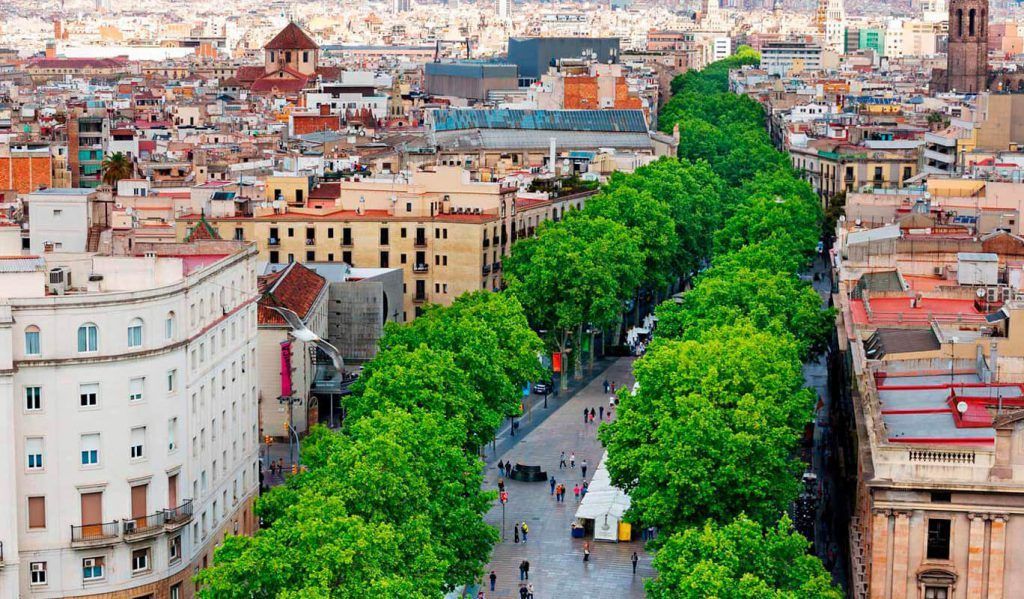
Las Ramblas, Barcelona
Do you know that Las Ramblas is the most emblematic street in all of Barcelona? It is the most central avenue that crosses the down town. It is also characterized by being a pleasant walking area of 1.3 kilometers that connects the Plaza de Cataluña and the old port.
All the tourists who visit this landmark observe that the street is always lively, full of passersby, live performances, street performers, flower kiosks and large terraces for a drink. There are also permanent attractions and they are as follows:
Wax Museum
The Wax Museum is a great neoclassical building that has more than 200 wax figures of famous and historical figures inside. We must highlight that the most curious exhibit in the place that is the bank’s vault.
| PRICE | – Adults: € 15. – Children between 5 and 11 years old: € 9. – Pensioners and Young Person’s Card: € 9. |
| SCHEDULE | – Monday to Friday: from 10: 00-13: 30 and from 16: 00-19: 30 hours. – Saturdays, Sundays and holidays: from 11: 00-14: 00 and from 16: 30-20: 30 hours. *Summer: every day from 10: 00-22: 00 hours. |
Boqueria
The Boqueria is the most famous market worldwide as it has more than 2,500 square meters and more than 300 stalls in which they offer you many different types of food, for example, sweets, Macedonian tubs, eggs, meat, fish, etc.
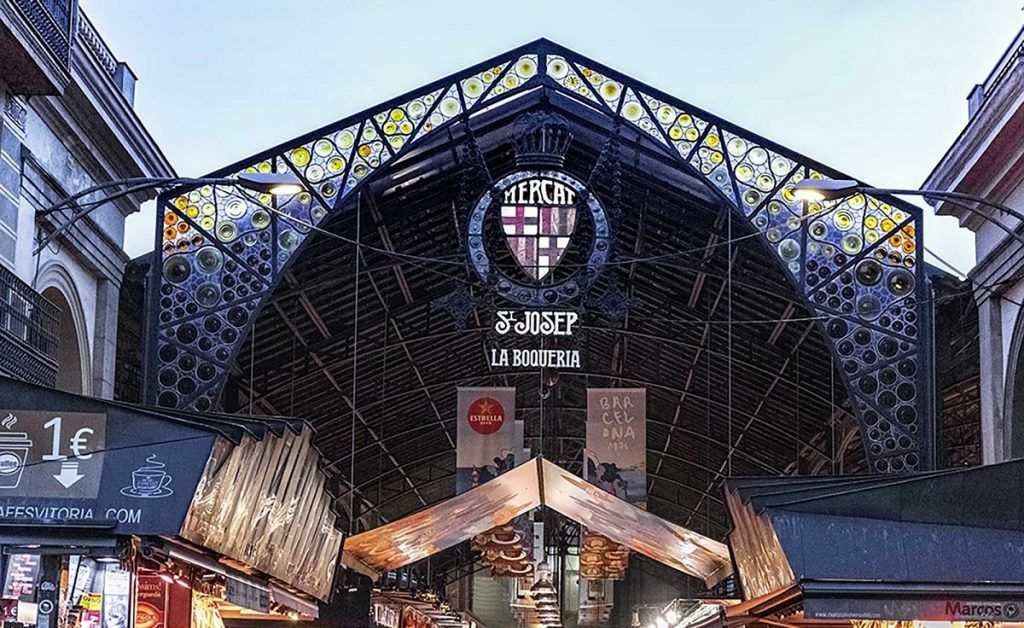
Boquería, Barcelona
| PRICE | Free entrance. |
| SCHEDULE | Monday to Saturday: from 08: 00-20: 30 hours. |
Christopher Columbus Monument
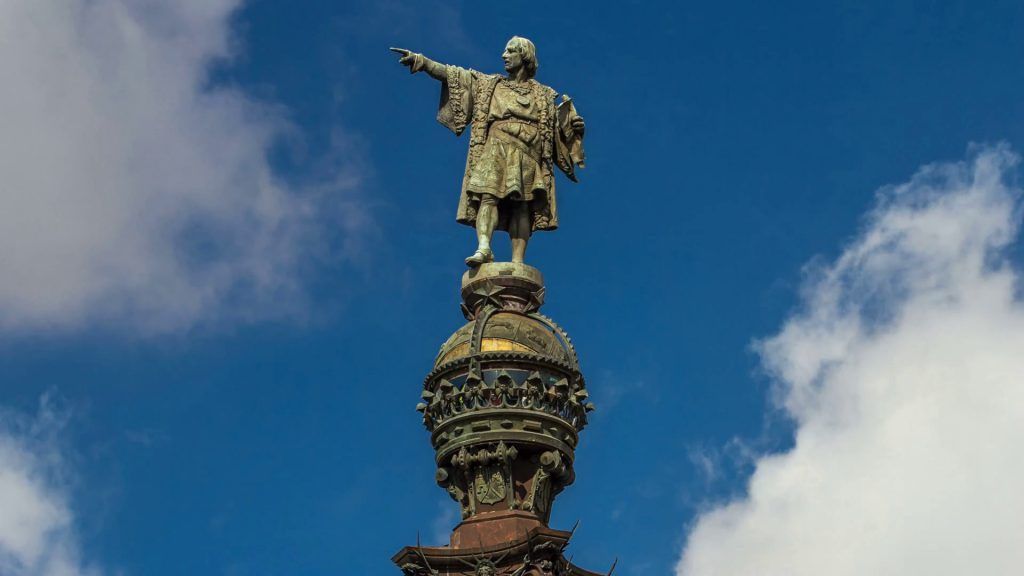
Christopher Columbus monument, Barcelona
The Christopher Columbus monument was built in 1888 when this navigator landed in Barcelona to find the new world. It stands out for its towering height of 60 meters and being at the end of Las Ramblas, next to the port.
3. Gothic Quarter, Barcelona
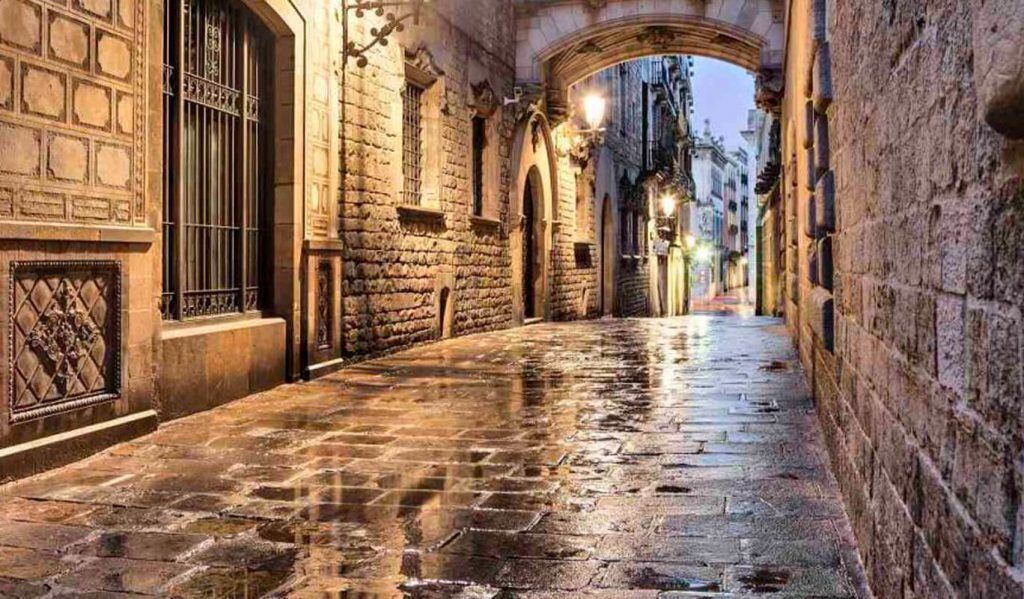
Gothic Quarter, Barcelona
One of the best-known neighborhoods is the Gothic Quarter, which has the greatest treasures in terms of Gothic buildings throughout the European continent. It is known for its medieval layout, its narrow streets, its hidden squares, and its ancient and modern buildings.
Brief history
Around Sant Jaume square, in the Gothic quarter, the Romans of Barcino settled, and it was established between the year 15 and 10 BC, becoming the economic and commercial center. In addition, there are remains of the Temple of Augustus and they were intact until the nineteenth century, at which time the walls were demolished.
Essential places to visit
There are many points of interest in the Gothic quarter, and the church of Santa María del Pi and that of San Felipe Neri should be mandatory stops on your trip. The Sant Jaume square is the emblematic place and in it there is the Generalitat building and City Hall, a place where many important events are held. Another of the places that should be mentioned is that of the King’s headquarters of the Royal Palace, which was built in the Middle Ages, and houses a group of buildings from that time which now house part of the Museum of History of the City.
| FREE WALKING TOUR: Exclusive Gothic Quarter Free walking Tour. |
4. Gracia
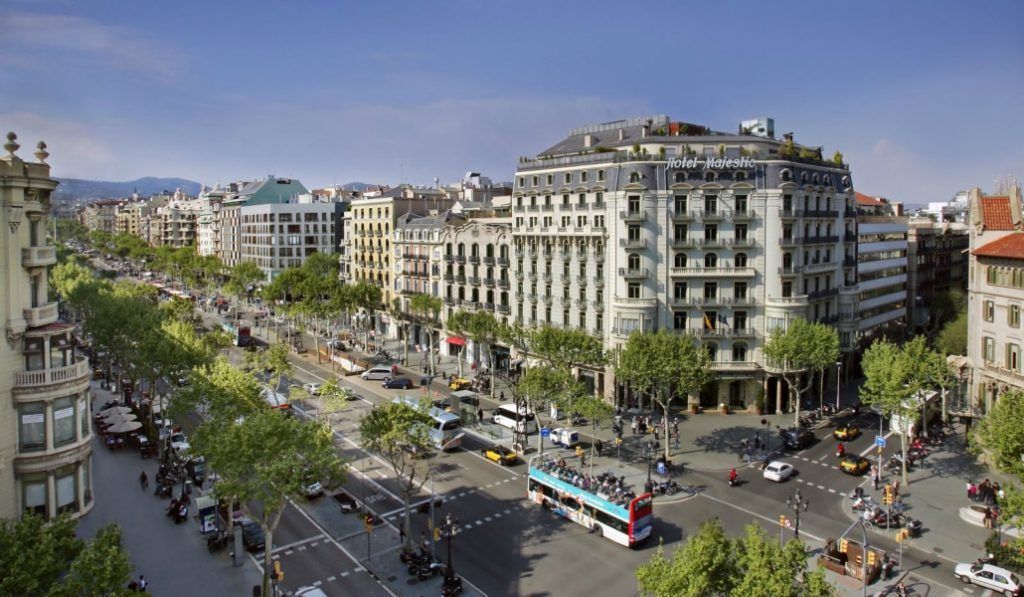
Gracia, Barcelona
Another one of the obligatory places to visit in Barcelona is the Paseo de Gracia which has been described as an elegant and stately promenade out of the nineteenth-century Barcelona bourgeoisie. It is characterized by linking the Plaza Cataluña with the neighborhood of Gracia and those who walk around can admire the amount of enormous, modernist and nineteen-hundreds’ buildings. Two of the most outstanding cases are the buildings created by Antonio Gaudí, explained below.
Casa Batlló
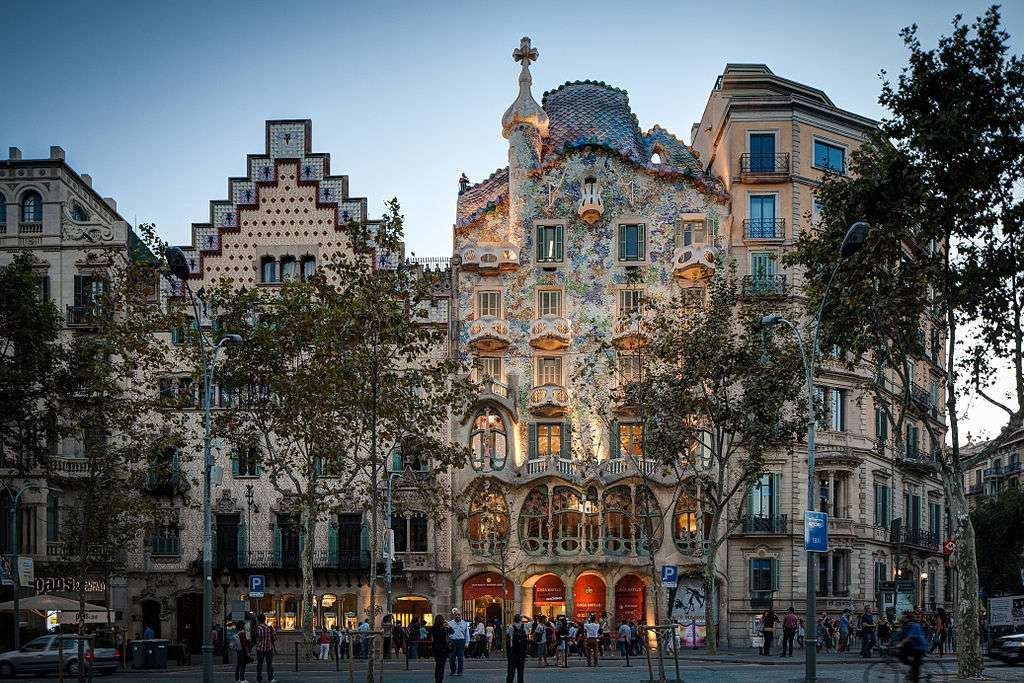
Casa Batlló, Barcelona
Casa Batlló was designed by Gaudí for Josep Batlló and was built between 1904 and 1906. The facade is very original, since the balconies look like skulls and the pillars like bones, and all of this playing with optical illusions. The interior is fantastic and the audio-guide runs through the old family residence that lived there to see all the most interesting hiding places, as well as a patio full of lights and a roof with very original fireplaces.
| PRICE | Adults: € 25. Young people between 7-18 years and over 60 years: € 22. Children under 7 years: free admission. The entry includes an augmented reality video guide. |
| SCHEDULE | Every day from 9: 00-21: 00 hours. There may be changes depending on the season. |
La Pedrera
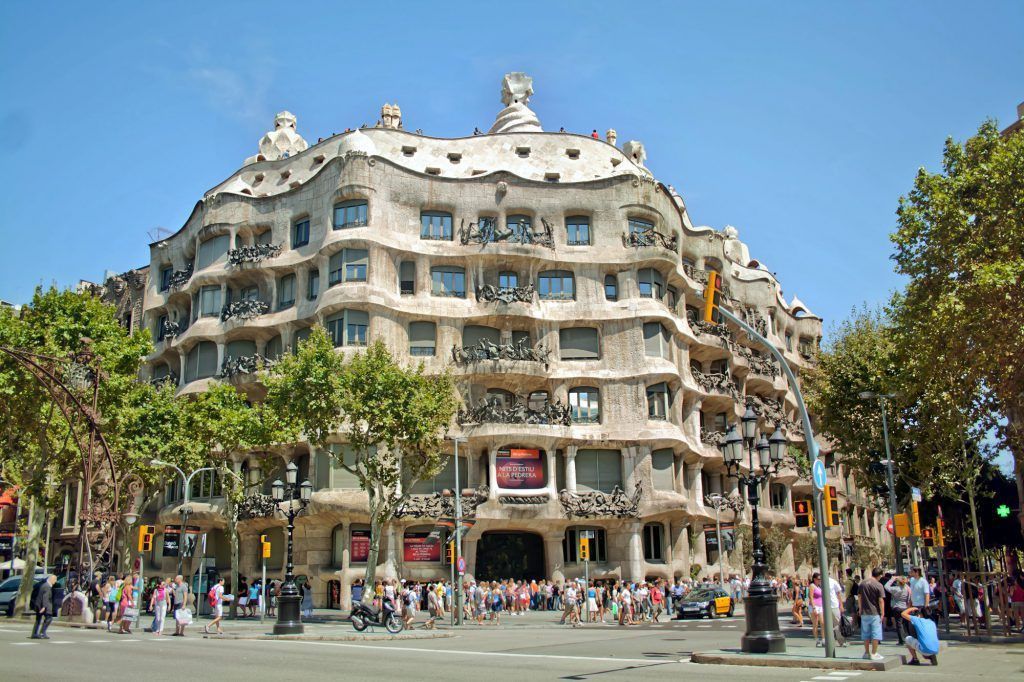
La Pedrera, Barcelona
La Pedrera or Casa Milà was built between 1906 and 1912 by the Spanish architect and was commissioned by Pere Milà and Roser Segimon with the aim of living there. A civil building that stands out for its innovation when it comes to building it and for its aesthetic and decorative solutions since the facade is of undulating limestone with huge windows and convoluted balconies. During the visit, the most curious thing to see is the rooftop where different elements are found, such as stairwells, skylights, chimneys, and free-form ventilation towers.
| PRICE | Adults: € 22. Students: € 16.50. Children between 7-12 years: € 11. Children under 6 years: free admission. |
| SCHEDULE | [+] November to February: Monday to Sunday: from 9: 00-18: 30 hours. [+] From March to October: Monday to Sunday: from 9: 00-20: 30 hours. May vary on some dates. |
Without a doubt, one of the essential places to see in Barcelona when you visit. We recommend this tour with a local guide with whom you can discover all the secrets of Catalonian culture.
| FREE WALKING TOUR: Gaudi and modernism free tour. |
5. Hospital of Santa Creu and Sant Pau
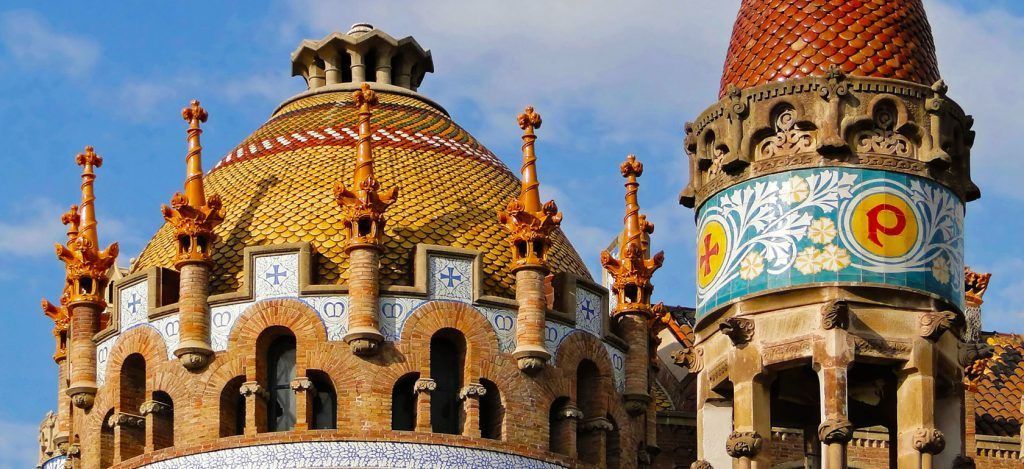
Hospital of Santa Creu and Sant Pau, Barcelona
Thanks to a millionaire’s donation, at the beginning of the 20th century they were able to start building the Hospital de la Santa Creu i Sant Pau by the hand of the modernist architect Lluís Domènech i Montaner. It is a hospital that occupies 9 blocks of the neighborhood with a square plot of 300 meters each side and 27 pavilions and, today, is declared World Heritage by UNESCO.
The architect decided to give it a completely avant-garde style and for 80 years it was the place where the poor were cared for. This hospital can be visited freely, with audio-guide or hire a guided tour to learn all the details of this icon from a bygone era.
6. El Born, Barcelona
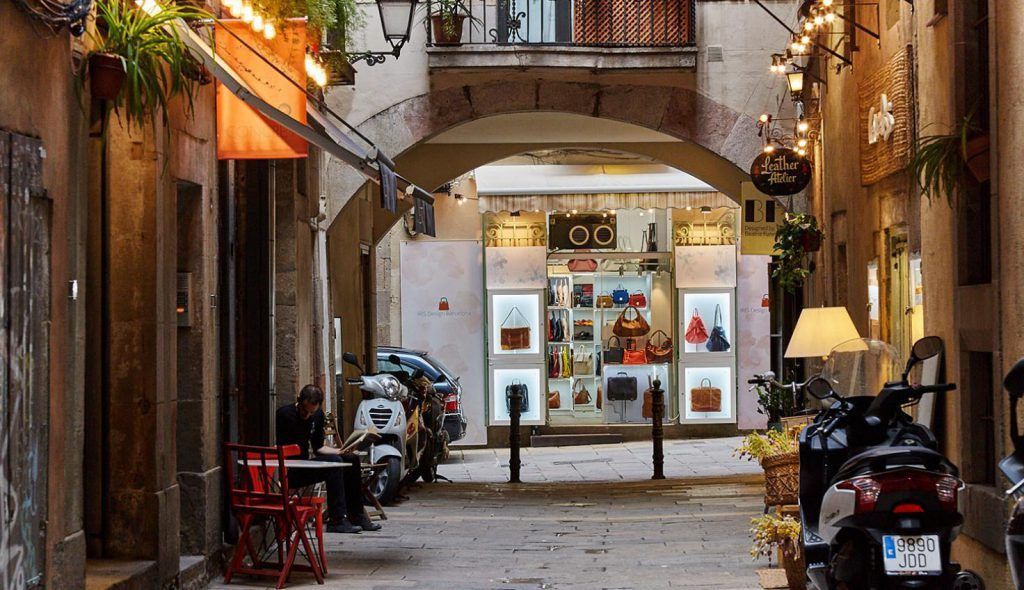
El Born, Barcelona
There’s no better way to fully enjoy one of the best-known neighborhoods in the city of Barcelona: El Born. The area has many essential places to visit in Barcelona that we strongly recommend.
Brief history
El Born was the core of the economy between the thirteenth and fifteenth centuries as it was one of the trade routes, which led to increased wealth and made very distinguished buildings such as the palaces of Montcada street possible. Little by little, the famous Ciutadella, a military fortress that was located in the current Ciutadella Park, fell apart and was finally lost.
What to do in El Born in Barcelona?
One of the notable places in this neighborhood is the Santa María del Mar basilica built between 1329 and 1383 and with a Gothic style. We must also mention the Picasso Museum, since it is a cultural symbol of El Born and one of the most popular tourist destinations, the most famous Market in the neighborhood called Santa Caterina, the walk along Via Laeitana and Calle Princesa.
7. Park Güell, Barcelona
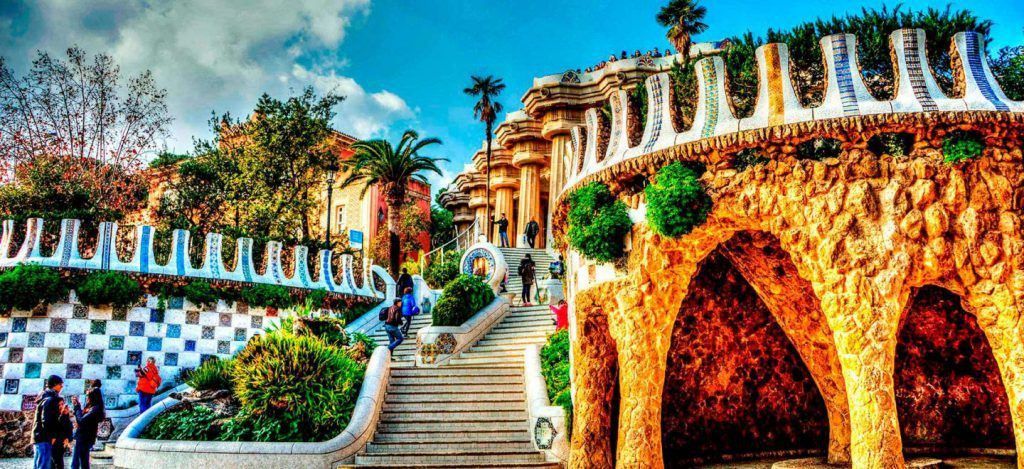
Park Güell, Barcelona
Park Güell is a public park with gardens and architectural elements located in Northern Barcelona. The design of the place was directed by the architect Antoni Gaudí and the construction took place between 1900 and 1914 in a natural environment that has some of the best views of the city. These are the park’s most famous sites.
The Nature Square
An esplanade that stands out for its natural beauty and is limited by a huge wavy bench lined with a beautiful mosaic; a site from which you can see views of the city.
The Dragon Staircase
An impressive staircase structured in 3 sections and made with stones, having the well-known salamander or the mosaic dragon above, which has been used as the park icon.
The Hypostyle Hall
This room is designed by 86 columns that collect rainwater and are intended to hold the Plaza de la Naturaleza, in addition, the roof domes are adorned with ceramic mosaics.
| PRICE | Adults: € 22. Students: € 16.50. Children between 7-12 years: € 11. Children under 6 years: free admission. |
| SCHEDULE | [+] November to February: Monday to Sunday: from 9: 00-18: 30 hours. [+] From March to October: Monday to Sunday: from 9: 00-20: 30 hours. May vary on some dates. |
Top essential places to visit in Barcelona: Park Güell
We highlight Park Güell as one of the most important places in Barcelona. Gaudí’s work is reflected in a very particular way in every corner of the park, from the Hall of the Hundred Columns, through the Hypostyle Room, the viaducts, or the Calvario Monument itself.
Beyond Park Güell, Guadí’s work extends throughout much of Barcelona, flooding the city with his art and way of understanding the world. If you want to see the best of Modernism and inform yourself with an expert in the field, we advise you to take a look at this tour with an official local guide of the city who will help you make the most out of your trip by uncovering the stories behind these iconic places.
8. Montjuic
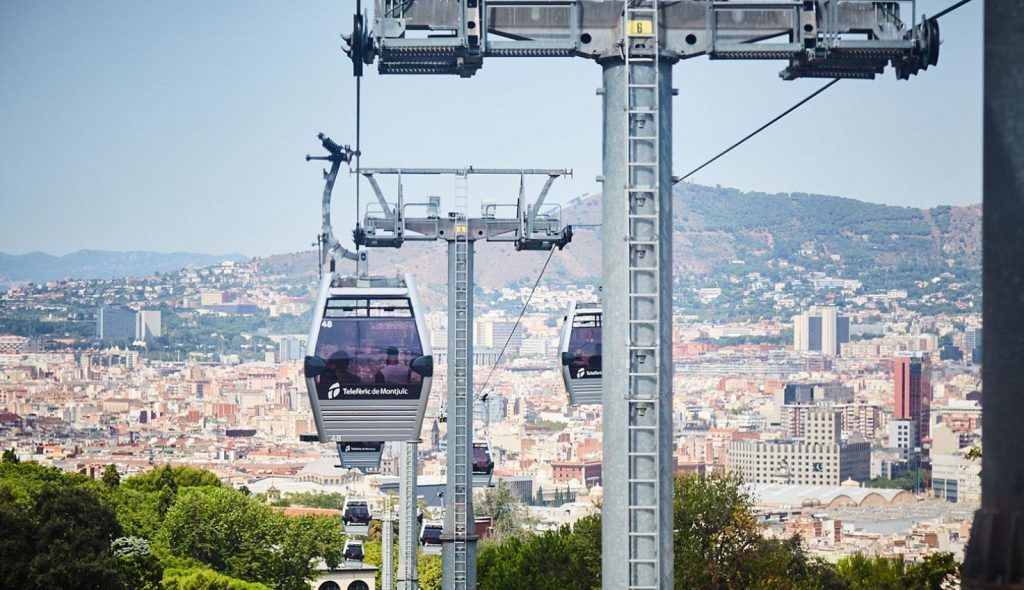
Montjuic, Barcelona
Apart from Tibidabo, Mt. Motjuic is Barcelona’s other mountain, in addition, it is one of the enclaves full of places and landmarks that used to play a key role in defending the city.
What to see in Montjuic, Barcelona?
For an ideal trip, visiting emblematic sites such as Montjuic Castle, the Joan Miró Foundation, the National Art Museum of Catalonia, the Greek Theater Gardens and the Magic Fountain of Montjuic, and many others is a must for you to get to know this unique place. Don’t forget some of the most important sports venues in the city such as the Olympic Stadium and the Palau Sant Jordi, host different types of events and are located in this vicinity.
9. Palau de la Música Catalana
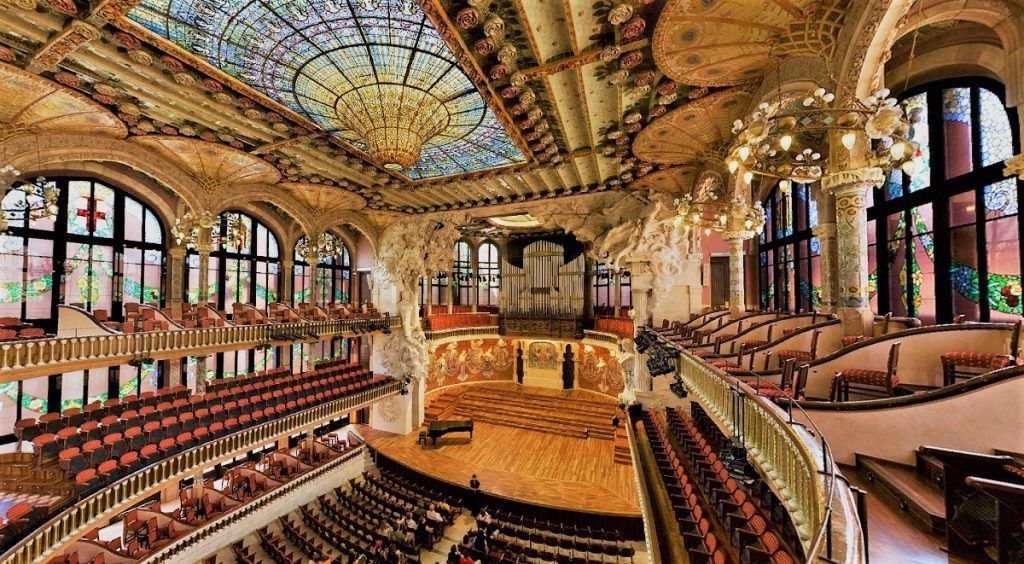
Palau de la Música Catalana, Barcelona
The Palau de la Música Catalana was designed by the architect Lluís Domènech i Montaner between 1905 and 1908. It is a very particular modernist building because of its magnificent facade that is hidden between the streets of the La Ribera neighborhood.
It is open to the public and stands out for having a rehearsal room of the Orfeón Catalán designed in the modernist era and because of the concert hall with great lighting as it has a giant skylight in the middle. Finally, there is the Lluís Millet room, where you can see the spectacular colonnade formed by the facade’s ornate balcony.
Music is a fundamental part of the culture of any city. That is why we are choosing the Palau de la Música Catalana as one of the essential places to visit in Barcelona.
| PRICE | Adults: € 20. Students: € 11. Over 65 years: € 16. Children under 10 years free admission. |
| SCHEDULE | Every day from 10:00 a.m. to 3:30 p.m. July and August until 6:00 p.m. |
10. MACBA: Museum of Contemporary Art of Barcelona
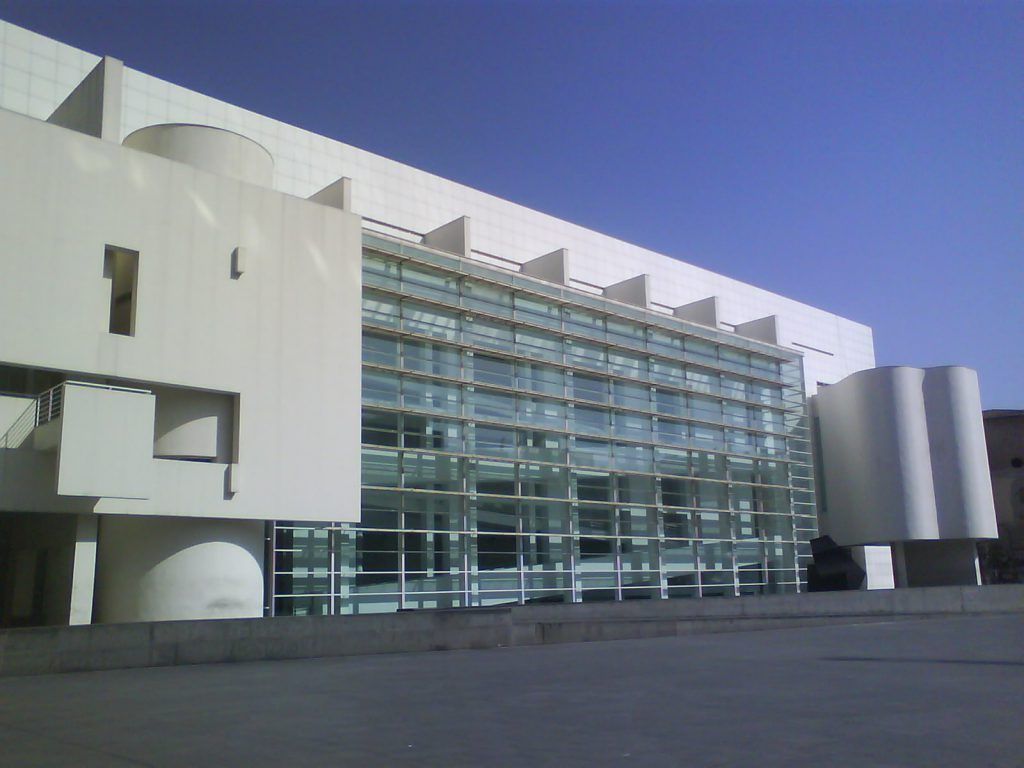
MACBA: Museum of Contemporary Art of Barcelona
The MACBA (Museum of Contemporary Art of Barcelona) is a space that opened its doors in 1995 and, since then, has become a national and international reference for art from the second half of the 20th century, recognized as a Museum of National Interest.
It is located in the Plaza dels Angels, next to the CCCB and the Faculty of Geography and History of the University of Barcelona. This esplanade is characterized by being a place in constant motion, with groups of skaters out under the sun and hanging out in its pleasant terraces.
The building was designed by Richard Meier. Its facade is accentuated by the pieces of glass while its white color and strong luminosity stand out and highlight its beauty. Inside. Here, you can visit permanent exhibitions, composed of a collection of more than 5800 own works, and also check out some of the featured temporary exhibitions.
Barcelona is a city to get lost and stroll through its streets throughout the day. Its endless cultural and gastronomic options have made it one of tourist’s favorite destinations in the Mediterranean. If you visit Barcelona, try doing it with a guide so you can get to discover the best places.
| PRICE | Adults: € 28.50. Children under 1.20 cm: € 10.30. Under 90 cm-over 60 years: free entry without access to attractions and shows. |
| SCHEDULE | [+] From September 25 to June 24: Monday, Wednesday, Thursday and Friday: 11: 00-19: 30 hours. Saturdays: 10: 00-20: 00 hours. Sundays: 10: 00-15: 00 hours. *Tuesday closed. [+] From June 25 to September 24: Monday, Wednesday, Thursday and Friday: 11: 00-20: 00 hours. Saturdays: 10: 00-20: 00 hours. Sundays and holidays: 10: 00-15: 00 hours. *Tuesday closed. |
| FREE WALKING TOUR: The Modernist bloom and the wonders of Gaudí – Free Walking Tour. |
11. Labyrinth Park
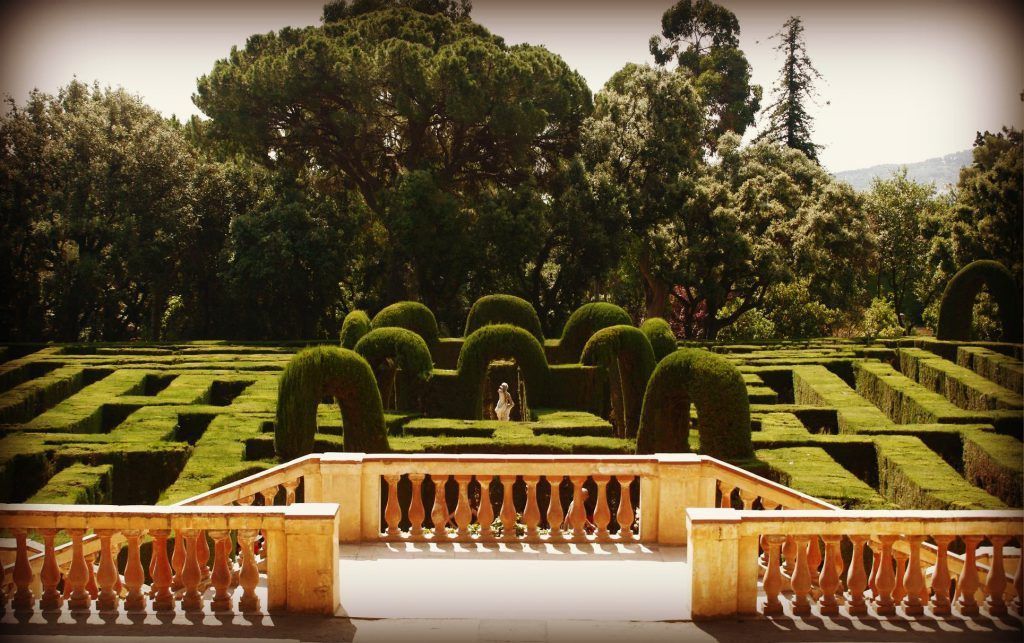
Labyrinth of Horta, Barcelona
You will find the park of the Labyrinth of Horta (Labyrinth Park) in the northwest of the city, in the district of Horta-Guinardó. It is the oldest preserved garden in the city and one of the essential places to visit on our list.
Of course, this is a lesser-known spot that is in a more remote place where many tourists looking for what to see and do in Barcelona don’t usually get the chance to visit.
The history of its gardens
This park combines Neoclassical and Romantic styles. Its construction began at the end of the 18th century as a private garden for the Desvalls family. The design was commissioned by the important Italian architect Domenico Bagutti, who together with the French gardener Devalet and the builder Jaume Valls, created this incredible landmark.
In 1961, the Desvalls family donated the gardens to the city of Barcelona, and today it is recognized as a museum garden and Cultural Property of Local Interest.
Tour the park
The biggest attraction you will enjoy in this magical-looking park is, without a doubt, its enormous maze of Cypress trees, in which getting lost is a game for both children and adults. However, throughout its gardens you will also come across spaces with different styles and influences, with sculptures, fountains and small buildings such as the Temple of Danae or the Pavilion of Carlos IV.
12. Raval neighborhood, Barcelona
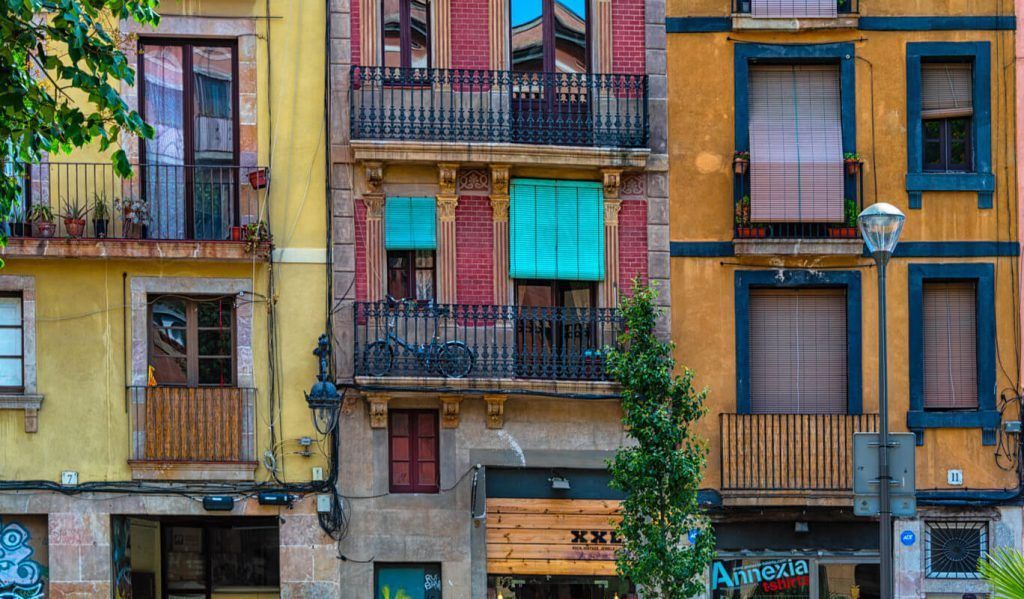
Raval neighborhood, Barcelona
Raval neighborhood is located in the center of Barcelona, next to La Rambla, within the Ciutat Vella (old Town) district. This unique enclave, known as Chinatown decades ago, stands out for its rich multiculturalism. In fact, more than 50% of its residents come from other countries around the world.
History and origin of the neighborhood
Originally, the neighborhood of El Raval was just a combination of settlements that were at the entrances of the city of Barcelona but outside its fortified walls. After the fortification reforms were initiated in the fourteenth century, the neighborhood was brought inside the wall. Interestingly, this wall was not completely demolished until the nineteenth century.
At the end of the 18th century, a strong industrialization process began in El Raval that changed the neighborhood’s history completely, making it the largest working-class neighborhood in the city and the densest in Europe. From this time period, there are factory houses that have been preserved to protect their relevance to the city’s history and its heritage.
Best things to do and see in Raval, Barcelona? Essential places
The neighborhood of El Raval is full of streets full bustling with activity, small shops and establishments with culinary delicacies from around the world.
La Rambla del Raval is a pedestrian avenue that divides the neighborhood. Here you will see a large bronze sculpture which is the work of the artist Botero, Nice, which is a figure of a fat cat that has turned into a neighborhood symbol.
This district houses some of the most important cultural spaces in the city: the MACBA, the CCCB and the Filmoteca.
From El Raval you access the La Boqueria market and the Sant Antoni market, two essential places to visit in Barcelona, especially when you are accompanied by an expert guide on a free walking tour of Barcelona.
| FREE WALKING TOUR: Old Town free tour. |
13. Tibidabo
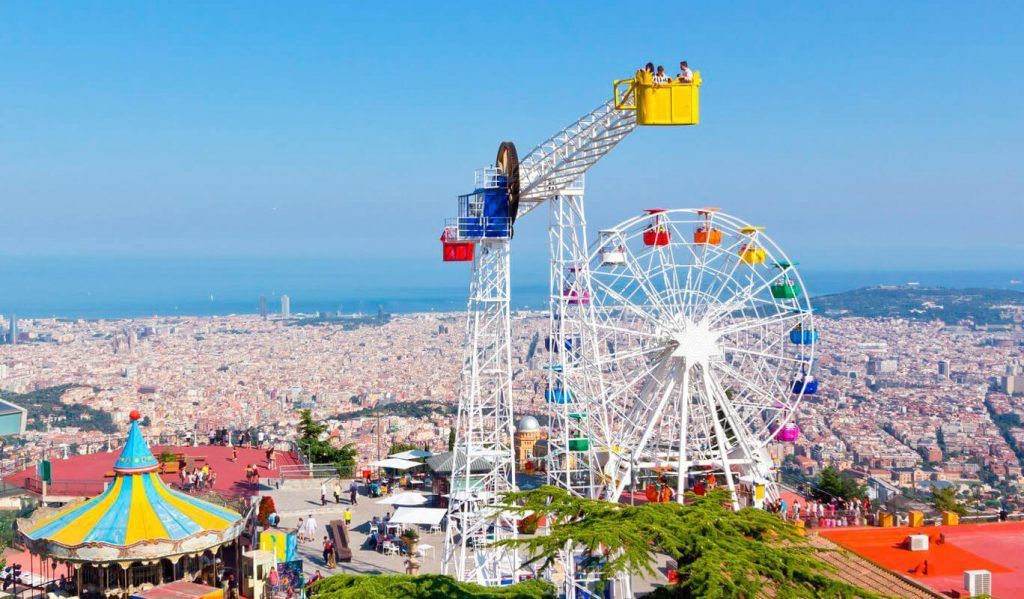
Tibidabo, Barcelona
Tibidabo is a mountain located approximately 500 meters above sea level that is part of the Sierra de Collserola. Beginning in the 19th century, Tibidabo hill began its urban development. There were distinguished buildings and houses in the modernist style, making the neighborhood home to Barcelona’s upper class.
There are different ways to get to the top of Tibidabo, where you’ll be able to enjoy spectacular views of the city. One of the most interesting ways to get there is to take the funicular from the bottom of the hill.
Tibidabo highlights
One of the biggest attractions is the Tibidabo Amusement Park. Opened in 1901, it is the oldest operating amusement park in Spain. It has more than 30 attractions, and has been the filming location chosen for many popular movies including Vicky, Cristina, Barcelona by Woody Allen.
The Expiatory Temple of the Sacred Heart is another place worth seeing if you make it to the top. It is an imposing neo-Gothic construction, designed by the architect Enric Sagnier i Villavecchia, and is composed of a lower crypt with a church built on top.
| PRICE | Adults: € 28.50. Children under 1.20 cm: € 10.30. Under 90 cm-over 60 years: free entry without access to attractions and shows. |
| SCHEDULE | They vary depending on the time of the year. Check out the amusement park schedules. |
14. Encants Market
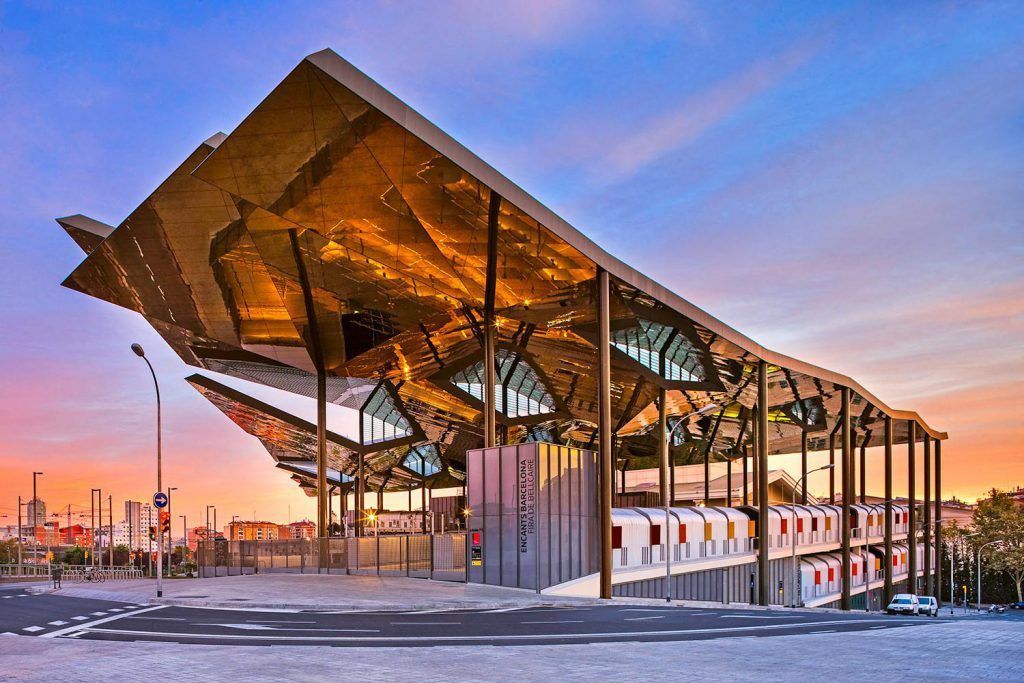
Encants Market, Barcelona
The Encants market is a paradise for collectors, bargain lovers, second-hand items and auctions. It is the largest market in the city and in its stands you can find everything you can imagine.
Its origin dates back to the thirteenth century, being one of the oldest markets in Europe. Throughout its history, it has changed location many times. In 2013, its definitive space was released, an open-air structure that is also protected from sun and rain, designed by the architecture studio B720.
It is located in the Eixample district, in what was the former Bosquet dels Encants, near the Glories, Monumental or Encants metro stops. It has several floors full of stands that are all accessible by way of elevators and stairs, and different dining options await its visitors.
| PRICE | Free entrance. |
| SCHEDULE | Monday, Wednesday, Friday and Saturday from 09: 00-20: 00 hours. |
In Barcelona, you can find other markets that are also worth seeing and visiting, such as the Boqueria Market or the Mercat de San Antoni. It is always interesting to see such places (essential in any city) full of people, and the stories that and day-to-day experiences there every day.
15. The Barceloneta
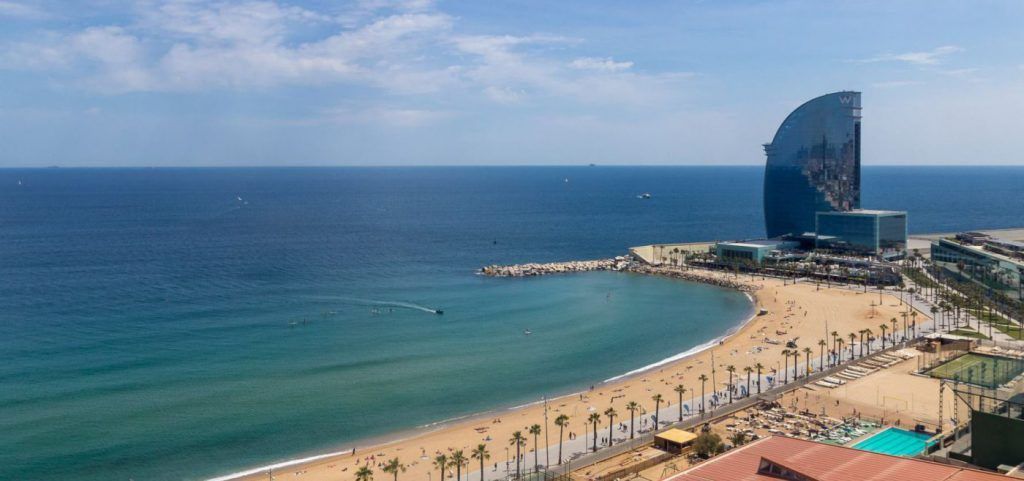
The Barceloneta, Barcelona
La Barceloneta is one of the best known seafaring neighborhoods in Spain and is located in the Port Vell district. Until the 18th century, it was an area where many people did not live, but that changed, in 1754 when fishermen began arriving when the sea was next to them. Currently, it has a modern feel that is mixed with the special charm of that time, with its narrow streets and its timeless facades stained by the salty sea breeze.
The best thing to do in this neighborhood is to get lost in its streets and enjoy the atmosphere as you try its rich cuisine. There are also places of interest to visit, such as the Museum of History of Catalonia or the Clock Tower, which was built in 1772 to act as a lighthouse for the port. Last but not least, there is the Barceloneta beach, one of the largest in Spain, stretching 578 meters along the coast. It also has extensive sports and leisure equipment to enjoy a magnificent afternoon at the beach.
| FREE WALKING TOURS: The best selection of FREE TOURS in Barcelona! |
Map with the essential places to see and visit in Barcelona
The list of places to see in Barcelona could be endless because it is a city full of monuments, streets, and buildings that would take weeks to visit completely. Therefore, local guides have made a selection of essential places in Barcelona so you can check out what most interests you and decide what you want to check out on your trip to Barcelona on your free walking tours.
Overall, Barcelona is one of the most popular places for tourists to visit because of its rich cultural, historical, artistic and natural attractions. If you plan on traveling to this beautiful city, which stands out as one of the most cosmopolitan and avant-garde cities in Europe, make sure you check out these the essential places on our guides’ list.
Leave a Reply